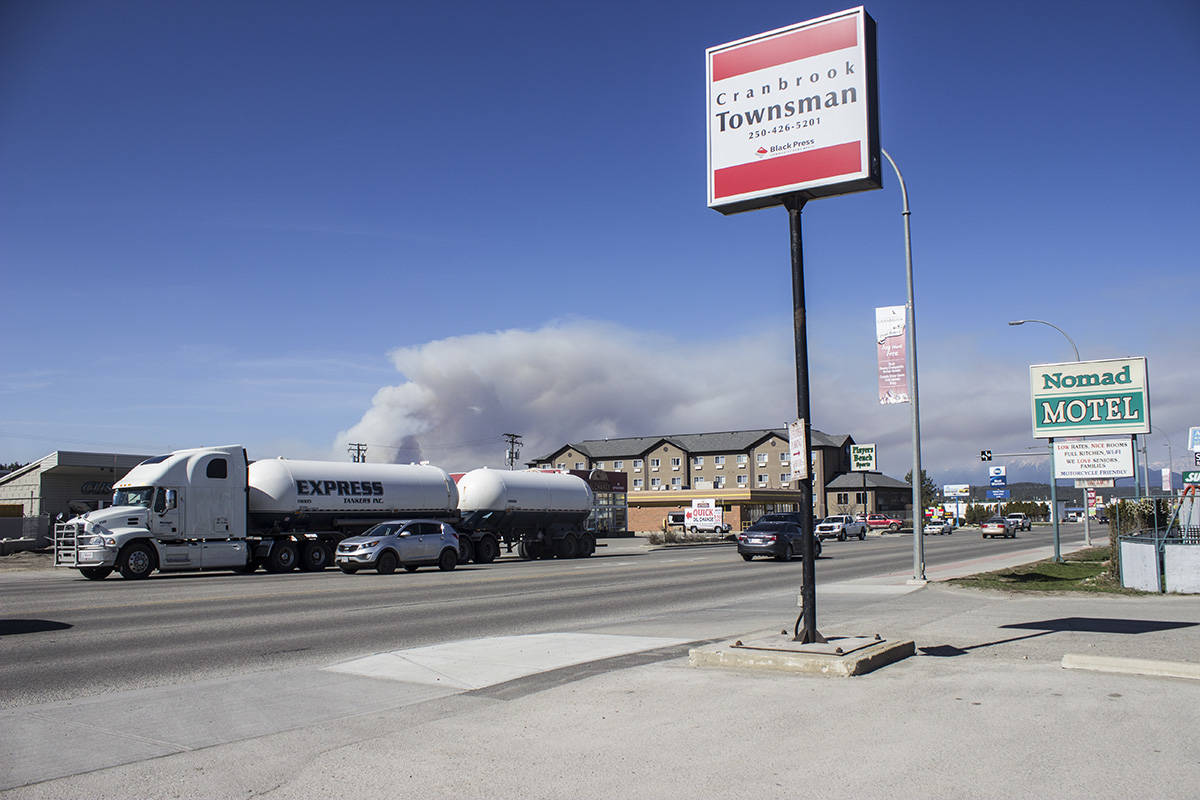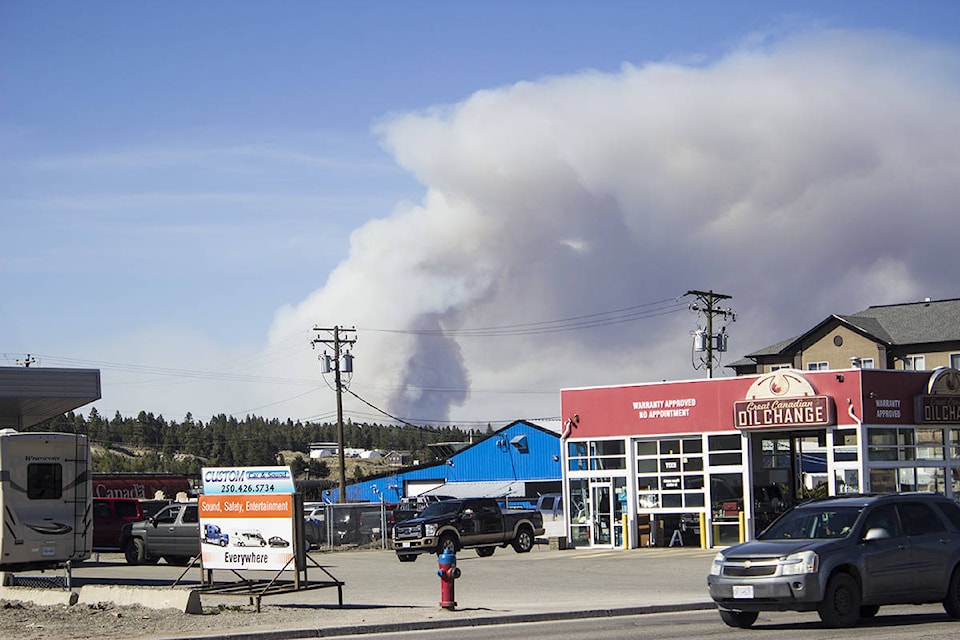Paul Rodgers
A prescribed burn is underway near the ?Aq’am community, after being delayed for a few days.
The burn site is about 15 kilometres north of Cranbrook, and about two kilometres north of Canadian Rockies International Airport, near the junction of Mission Road and LD Ranch Road. Smoke may be visible from Wasa, Cranbrook, Kimberley, Wood’s Corner and Meadowbrook. This is the first prescribed burn in the area in two years.
High winds and lower temperatures forecasted for the scheduled day was behind the decision to shift the date forward.
“Prescribed burns are conducted for several reasons,” explained burn boss with BC Wildfire Services Andre Chalabi.
“Within the Rocky Mountain trench, fire is applied for ecological reasons. The trench is a fire maintained ecosystem where trees and vegetation depend on fire in order to thrive. Wildlife depends on these high frequency/low impact fires for forage and habitat.
“We apply fire when the fuel conditions are right so we can measure success against the objectives on the land,” Chalabi continued. “Some years we unfortunately do not get the right conditions to create the desired fire impacts and therefore cannot do controlled burns.”
This burn, as described by Rocky Mountain Trench Ecostystem Restoration Program member Dan Murphy, is unique in that it is actually two burns in one. The original partner on the burn was the ?aq’am, who are partnering with Rocky Mountain Trench and conducting their part of the burn on Federal reserve land near the St. Eugene Mission.
The second part of the burn is taking place on Provincial Crown land. The Trench Society acquired funding from the Forest Enhancement Society of BC to the amount of $44,993. The money was used to prepare the land for the prescribed burn, and then to provide some of the services including fire guard construction. The bulk of the cost, however, is picked up by BC Wildfire services, who provide all the equipment, trucks and expertise to pull it off.
“It’s quite an organized process and it’s very safety oriented,” Murphy said. “It kind of runs like military efficiency. There’s a lot of planning that goes into it and they don’t execute it until the time is just right.”
Factors that effect the scheduling include daytime temperatures, drying conditions leading up to the burn, relative air humidity and windspeed. You want a little bit of wind, but not too much, according to Murphy.
What they are trying to do is replicate a low-intensity ground fire. They don’t want a raging inferno that consumes large trees, the aim is just to burn off some of the material that’s on the ground, and some smaller trees, in order to allow for the rejuvenation of new shrubs and grasses.
“This is something that Mother Nature did before Europeans came to the New World and we became very proficient at putting out forest fires,” Murphy explained. “So a lot of these conditions that have been created have been from the absence of natural fire.”
He added that First Nations peoples have practised prescribed burning for thousands of years with the purpose to create habitat for wildlife and for shrub growth for berries. After the First and Second World Wars, the technologies that came from them— such as aircraft and bulldozers, increased humans’ ability to suppress natural fire cycles.
“Since the 1950s we haven’t been allowing for these sort of low-intensity frequent fires that are natural to this area. So that’s what we’re trying to replicate, we’re trying to replicate mother nature,” Murphy said.
The burn began Thursday and involves helicopters dropping pingpong ball-sized devices filled with a chemical that causes them to explode upon impact and help spread fire. In addition to the safety measures put in place before the burn, BC Wildfire Services are on hand in case there’s an escape of any kind. They will use their expert training to put the fire out should that unlikely event occur.
“Fire always comes with risk, but the planning phase is where we identify and mitigate hazards and manage areas that could pose problems,” said Chalabi.
The lighting process went until 5 p.m. on Thursday, April 26, and smoke was expected to be visible throughout Friday morning.

